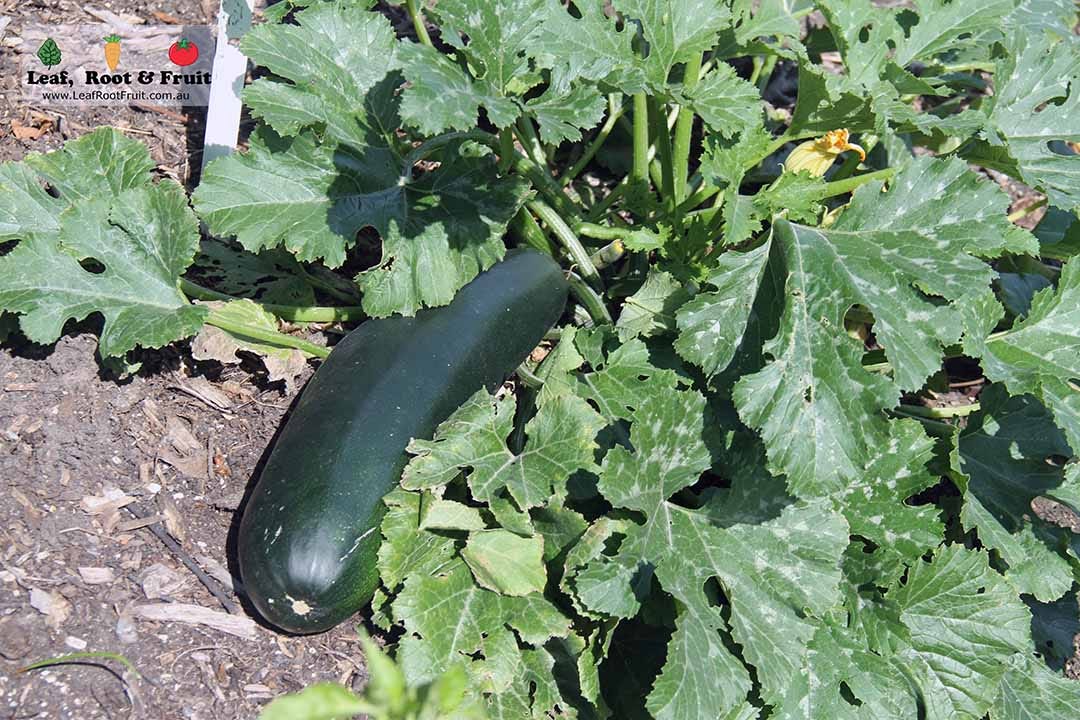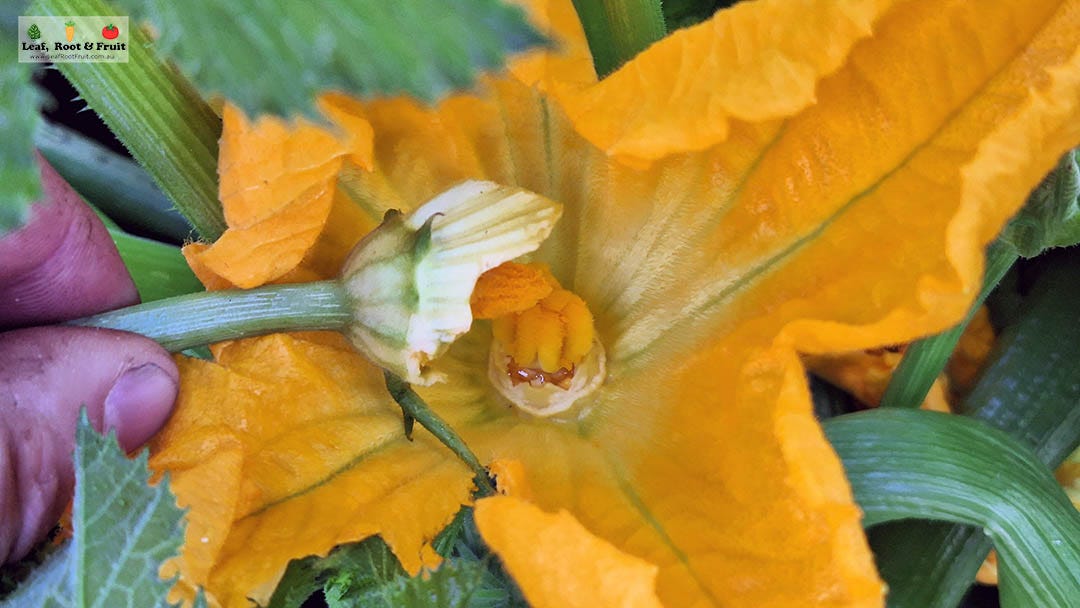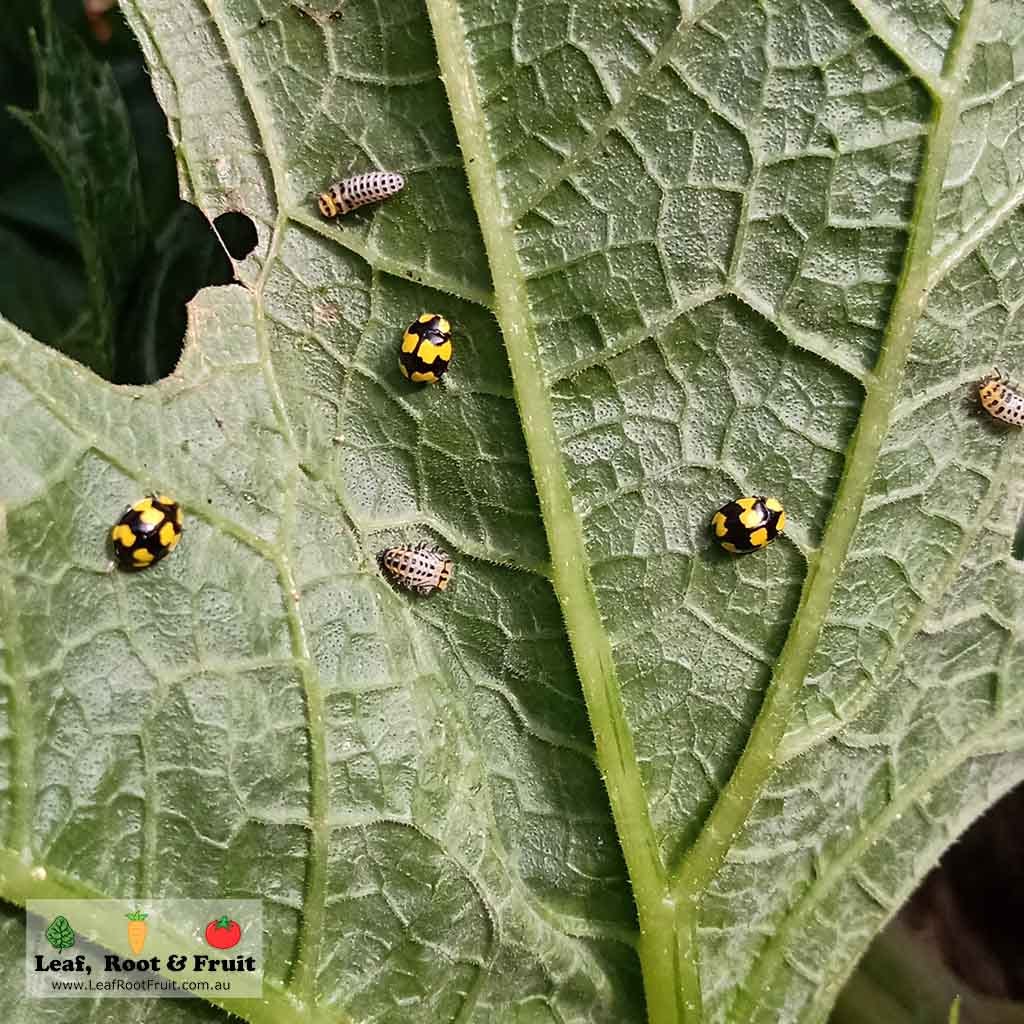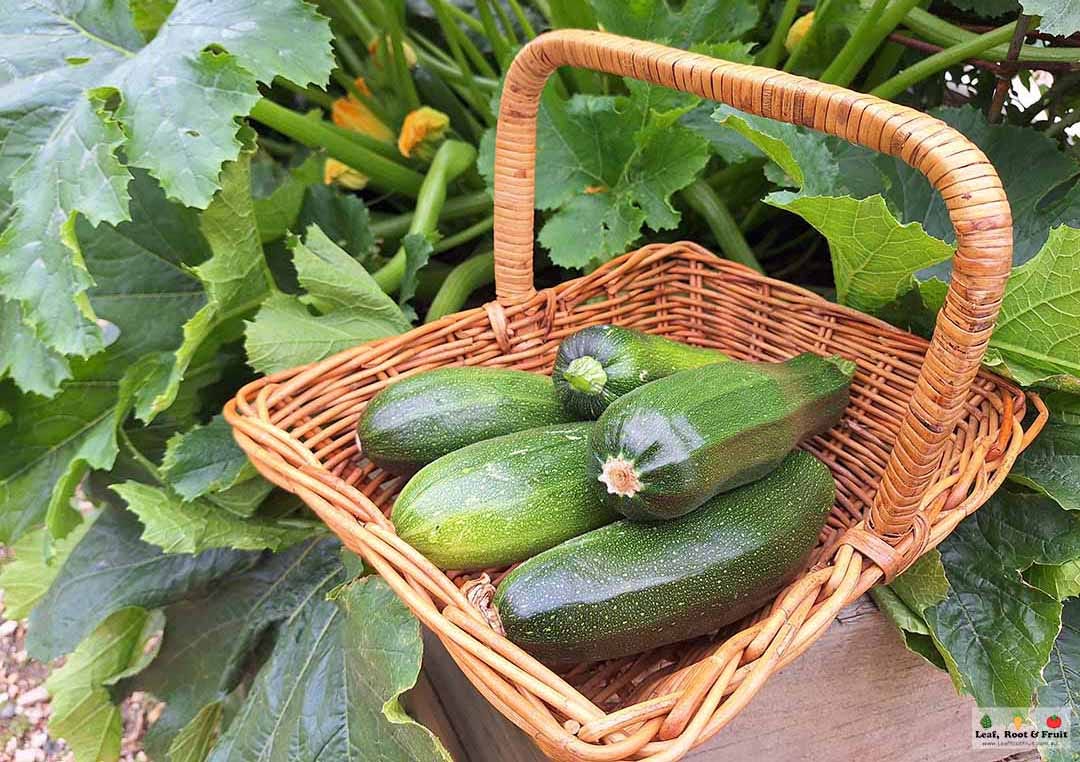Everything about growing zucchini is turbocharged.
You start by planting big seeds. Once germinated, the seedlings muscle up like an early ’70s Schwarzenegger. When the plant is fully grown, the leaves are huge, rough and spiky. A zucchini plant means business, and it shows this through its conveyor belt production of fruit. A zucchini plant is a very productive vegetable indeed.
I love playing the game of hide and seek with my zucchini plants and so do the kids. In the height of summer, I try to inspect the plant daily. Sometimes you miss a developing fruit, and then it’s too late. Overnight a small, tender, perfect zucchini turns into a monster. These monsters are not ideal in the kitchen but they’re fun to find. The kids love picking the whoppers and parading them into the house. What’s not to like about growing a monster zucchini?

Did you hear the one about the woman who grew the world’s largest zucchini? She wanted to take it to a friend to show it off, but the zucchini was so huge, it stuck out the car window and she couldn’t lock the car. She stopped at the shops for a few things on the way, and when she returned to her car, a terrible thing had happened… someone had left her the world’s second largest zucchini!
We have a “one zucchini plant only” rule in our household
I think everyone makes the same mistake at some point. You buy a punnet of zucchini seedlings from the plant nursery and don’t want to waste the excess seedlings. Rather than give them away or compost them, you plant all those seedlings into the garden. It can’t hurt, can it?
Then boom, you spend the rest of the summer carrying arm loads of zucchini into the house. Every day. You can’t give them away fast enough. Friends stop visiting because they’re sick of the zucchini you try to offload to them. You can have too much of a good thing.
A few years back we decided to implement a one zucchini plant rule in our household and we’ve never looked back. I highly recommend you do the same.
Common problems when growing zucchini
I’ve already alluded to the biggest problem with growing zucchini, and that’s their overproduction. However, sometimes zucchini have a little “blip” just when it looks as though everything is going well. Seedlings will bolt out of the blocks and quickly grow into large plants. They’ll begin to flower profusely but then the little female zucchini wither and fall off. This is most likely a result of a lack of pollination.

In autumn, at the end of the season, you’re likely to encounter powdery mildew on the leaves of your zucchini plants. Cooler night-time temperatures combined with increased humidity causes this fungal disease to proliferate. Often gardeners look to short-term remedies. I see the disease as an inevitable consequence of the transition from one season to the next. To me powdery mildew is simply a sign to remove the spent plants and begin planting winter vegetables.
Interestingly, I see in Melbourne that many zucchini plants suffer powdery mildew outbreaks as early as February as a result of the coastal humidity. In contrast, up here in cool temperate Kyneton, our summers are hot and very dry. The low humidity reduces the incidence of fungal diseases and it’s usually the first frost that suddenly wipes out our zucchini production in late April or early May.
The following posts in the Vegetable Patch from Scratch series will give you more information on:
Zucchinis die a lady-like death
I love the autumnal demise of the zucchini plant, possibly because I’m sick of zucchini at that point, but more so for the spectacle of Illeis glabula that it attracts.
Illeis glabula is also known as the Fungus Eating Ladybird and they begin their feast as zucchini plants slowly succumb to powdery mildew each autumn.
These ladybirds with yellow spots quickly breed up and cover the leaves with adults and larvae that munch as much powdery mildew fungus as they can.

Myth-busting: zucchini or courgette?
Zucchini are easy to grow, so there are not really any great myths to bust on the process of growing them. But there are some interesting discussions to be had about what to call them.
First, zucchini or courgette? That depends on where you are from. Courgette comes from the French word for green gourd and is commonly used in Britain and New Zealand.
Zucchini comes from Italian and is more commonly used in Australia and the USA.
In Italian, you can refer to a zucchini using both the masculine (zucchino) and feminine (zucchini) forms. Italian speakers also refer to plural zucchini as zucchine (feminine) or zucchini (masculine). We’ve adopted this word into English where zucchini can be either singular or plural. But you can also refer to multiple zucchini as zucchinis.
My editor, Kerryn, says it doesn’t matter, so long as I’m consistent.
The nitty-gritty of growing zucchini: phenology, varieties and planting
Timing
This chart shows the best times to grow zucchini based on my experience of growing these crops in both Melbourne (warm temperate) and Kyneton (cool temperate), both in south-eastern Australia. The timing is applicable for growers in the same climates across the southern hemisphere. Northern hemisphere folks will need to adjust the timing by six months.


